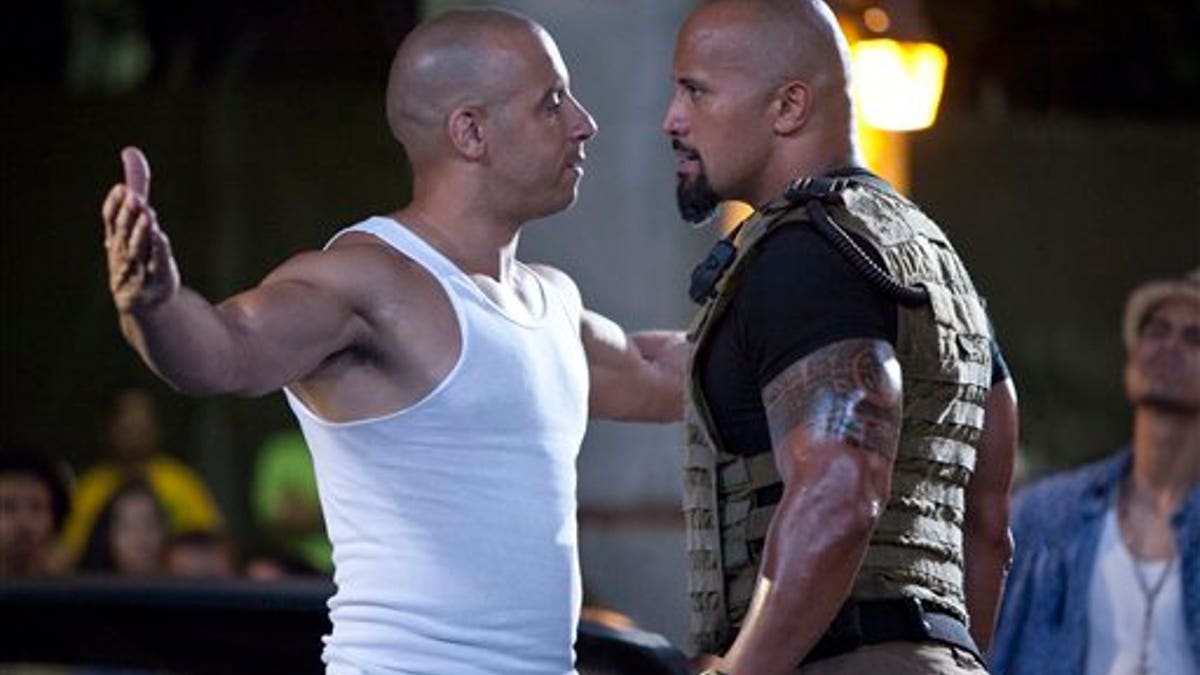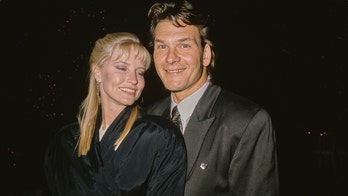
In this film publicity image released by Universal Pictures, Vin Diesel, left, and Dwayne Johnson are shown in a scene from "Fast Five." (AP)
Let’s face it, we all love a hard and fast, pounding action flick – bombs, blood, fire, fast cars and explosions. But while technology continues to advance, it seems the stunt aspect of the movie industry is reverting back to the old days, with less computerized tricks and more real-life madness.
“One of the things that was really stressed in the meetings was we wanted to keep the new film real,” says ‘Fast Five’ stunt coordinator Jack Gill. “The very first ‘Fast & Furious’ had very real stunts, real car wrecks and the business at that point was just getting into the digital realm. Everybody wanted to do digital but they started to get so over-the-top that the audience caught on and thought ‘nobody can do that.’ The audience knows the difference; real stunts make the audience feel as if they’re in the driver’s seat again.”
And Hal Needham, stunt-man-turned-author of his aptly-titled memoir, ‘Stunt-man!,’ concurs.
“Audiences appreciate stunts that look real. When you have CGI (computer-generated imagery,) you get things that are humanly impossible to do and you lose a lot of the audience,” Needham explained. “I believe if you go the old-fashioned way of doing stunts, it pays off.”
Luckily for the many stunt men and women in Tinseltown, they stay employed based on the fact that even if actors wanted to do their own death-defying scene sans a body double, it simply wouldn’t fly under the studios’ insurance policy.
“I have this huge fight scene with Vin Diesel (in the film.) I can take him, German suplex through the wall, but the stunt double will have to actually go through the wall and get crashed and fall,” “Fast Five” star Dwayne Johnson recently told FOX411’s Pop Tarts column. “Vin was willing to go, but the studio wouldn’t let him.”
According to Gill, this regulation made putting the tough action sequences together quite the challenge.
“These guys have done so much before that they are comfortable doing a lot of the action themselves, but one of the things we always have to be aware of is trying to put the actors in a position where they can do as much action as they can but eliminate the chance of injuring them,” he explained. “If they even break a finger you (the production) could be shut down for months – that’s what’s hard. You have to really figure out and be sure of the scenes they can do safely.”
And not surprisingly, action movies peppered with extravagant stunts require lots of bank – for “Fast Five,” the stunt budget was at least $25 million. In that, Gill and his team wrecked 230 cars and took three full takes of every single crash, as they had three different versions of angles to accomplish for every wreck.
Yikes.
But technicalities and technologies aside, Needham is proud to say that today’s stunt world has really found its feet.
“The industry has changed for the better. The young stunt men are in better shape than the days when I came in and if you were a cowboy, you were a cowboy and that was the only thing you got called for,” the 80-year-old veteran explained. “Stuntmen weren’t known for being in the best of shape, but they’re in great shape today and the equipment is so much better than it was – that makes a big difference.”
And given the financial success of recent blockbusters like “Fast Five” and “The Expendables,” it seems the action film is here to stay – but apparently it takes more than driving cars off bridges or running across a freeway during peak hour to win the hearts of American audiences.
“There are two things needed for success – action and comedy,” Needham added. “If you can make people laugh, you’re home. Then if you throw in a little action to get their blood pumping, you’re going to have a double barrel.”






